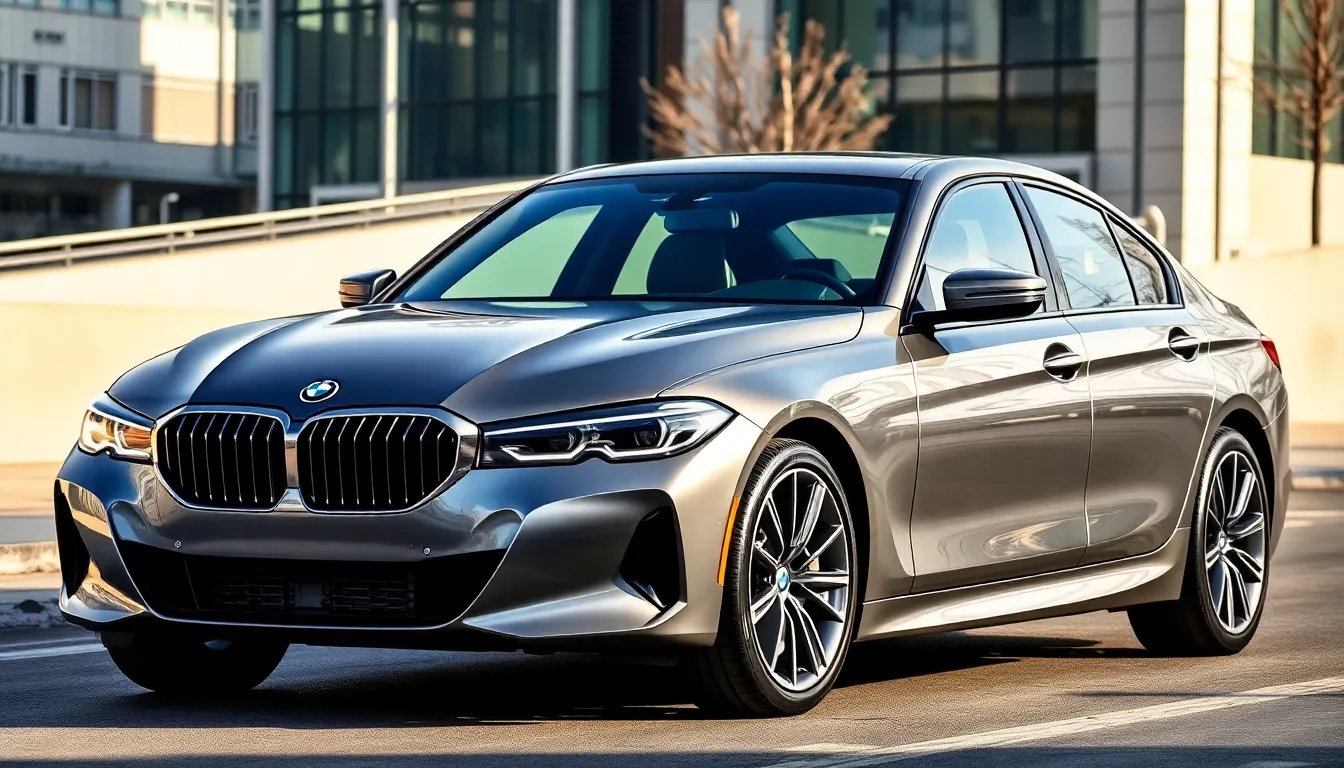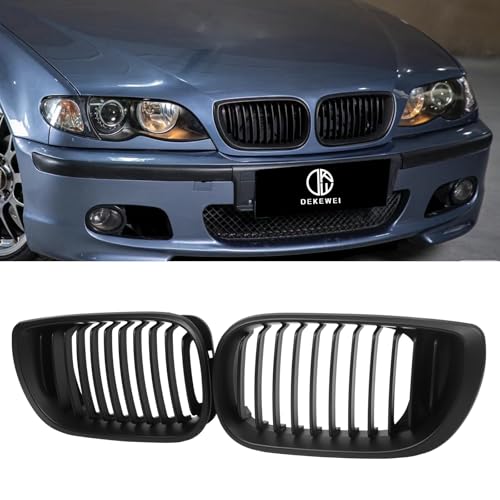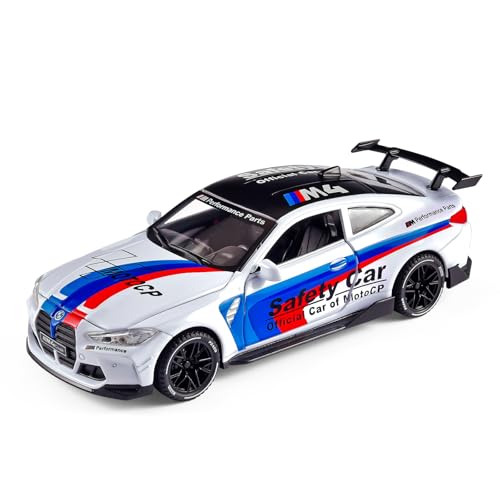BMW’s aesthetic philosophy has captivated automotive enthusiasts for over a century, transforming the German brand into a global symbol of sophisticated design and engineering excellence. We’ve witnessed BMW consistently push the boundaries of automotive beauty, creating vehicles that seamlessly blend aggressive sportiness with refined elegance.
From the iconic kidney grille that’s become instantly recognizable worldwide to the sleek silhouettes that define modern luxury, BMW’s design language speaks to drivers who demand both performance and visual impact. We understand that choosing a BMW isn’t just about transportation – it’s about making a statement that reflects your appreciation for meticulous craftsmanship and cutting-edge style.
Whether you’re drawn to the muscular stance of an M-series or the minimalist elegance of their electric i-models, BMW’s aesthetic appeal continues to evolve while maintaining the timeless design principles that have made these vehicles coveted status symbols on roads everywhere.
The Iconic Kidney Grille: BMW’s Most Recognizable Design Element
BMW’s kidney grille stands as the brand’s most distinctive visual signature, instantly identifying every model from blocks away. This twin nostril design has evolved from functional necessity into pure automotive artistry.
Evolution From Subtle to Bold
Originally appearing on the 1933 BMW 303, the kidney grille started as two separate oval openings designed primarily for engine cooling. We’ve watched this feature transform dramatically over nine decades, growing from modest chrome accents into commanding design statements that dominate the front fascia.
During the 1960s and 70s, BMW refined the grille’s proportions to complement the clean lines of models like the 2002 and early 3 Series. These iterations maintained restraint while establishing the kidney shape as BMW’s permanent design DNA.
The 1980s brought subtle expansion as BMW increased grille size to match more powerful engines and aggressive styling cues. Models like the E30 M3 showcased how the kidney grille could balance sportiness with sophistication.
BMW’s design team began pushing boundaries in the 2000s, creating larger and more prominent grilles across their lineup. The E60 5 Series and E63 6 Series demonstrated how modern manufacturing allowed for more complex shapes and integrated lighting elements.
Contemporary BMW models feature kidney grilles that span nearly the entire front end width. The current 4 Series and 7 Series showcase towering vertical proportions that would’ve seemed impossible during the brand’s early years.
Modern Interpretations Across Model Lines
Today’s BMW lineup presents fascinating variations of the kidney grille theme, with each model series receiving customized treatments. The X7 SUV sports the largest iteration we’ve ever seen, measuring over 12 inches tall and incorporating active air flaps for aerodynamic efficiency.
Performance oriented M models receive specialized kidney grilles with distinctive black mesh inserts and integrated air ducts. The M3 and M4 feature aggressive interpretations that channel air directly to the intercoolers and brake cooling systems.
BMW’s electric i4 and iX models reimagine the kidney grille as a closed surface panel, maintaining the iconic shape while eliminating the need for traditional airflow. These versions incorporate sensors and cameras within the familiar kidney outline.
Luxury focused models like the 8 Series and X6 showcase illuminated kidney grilles that create dramatic nighttime presence. LED strips outline the entire perimeter, making these vehicles unmistakable even in complete darkness.
The compact 2 Series and X1 receive proportionally smaller kidney grilles that maintain family resemblance without overwhelming their modest dimensions. BMW’s designers carefully scale each interpretation to match the vehicle’s overall character and target audience expectations.
Sleek Body Lines That Define BMW’s Athletic DNA
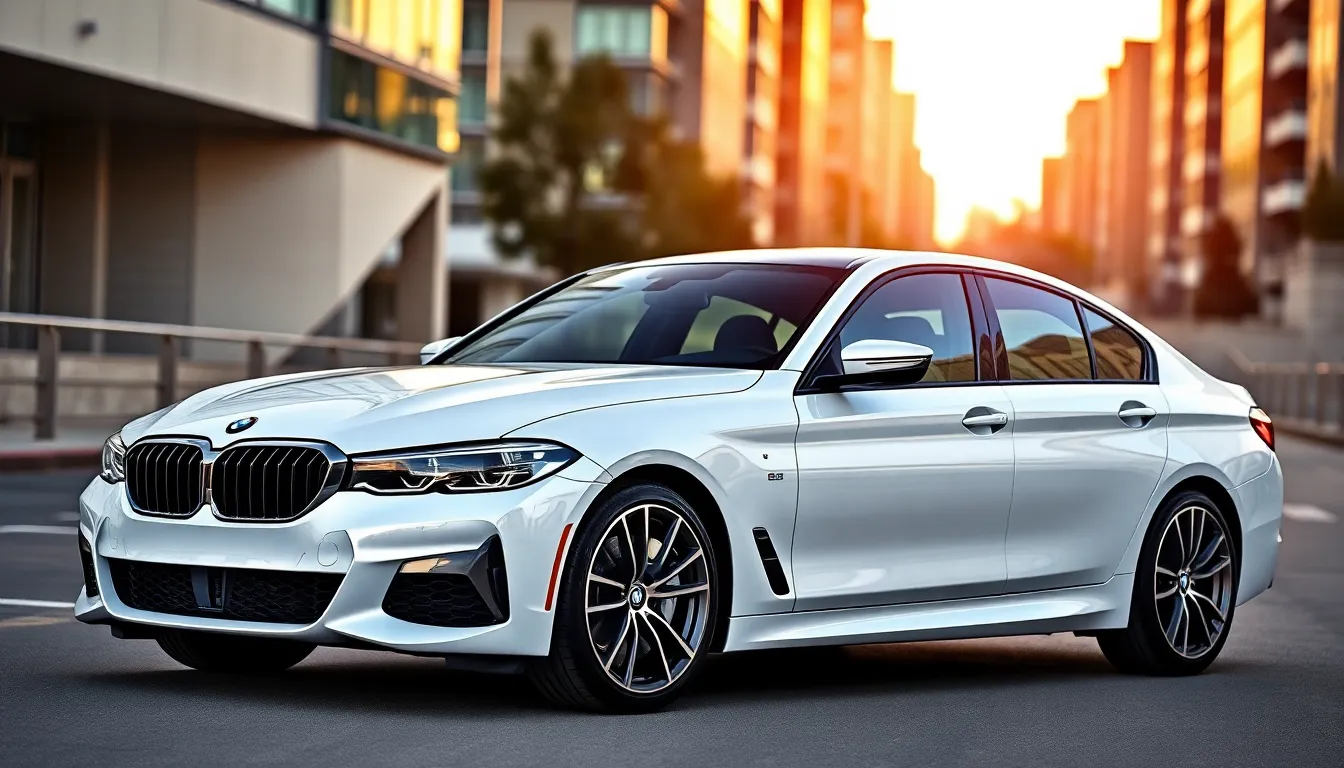
BMW’s athletic heritage flows through every curve and crease of their vehicle designs, creating a visual language that communicates performance before you even start the engine.
The Hofmeister Kink Window Design
Named after BMW’s legendary design chief Wilhelm Hofmeister, this distinctive C-pillar feature has graced BMW models since the early 1960s. The Hofmeister kink creates a subtle forward lean in the rear window that suggests motion even when the car sits still. We can trace this design element from the original BMW 1500 sedan through modern models like the 3 Series and X5.
Functional benefits extend beyond pure aesthetics with the kink design. Engineers use this window shape to improve structural rigidity around the passenger compartment while optimizing aerodynamic flow over the rear glass. The angular cut also provides better rear visibility for drivers compared to traditional rounded C-pillar designs.
Contemporary BMW models showcase evolved versions of the classic Hofmeister kink. The 4 Series coupe features a more pronounced angle that emphasizes its sporty character, while SUV models like the X3 adapt the design with modified proportions to suit their taller profiles. Electric i models reinterpret this signature element with cleaner lines that maintain the family resemblance while embracing futuristic aesthetics.
Sculpted Side Panels and Character Lines
Surface tension defines BMW’s approach to side panel sculpting, where designers create ever-changing plays of light and shadow across the metal. The brand’s signature character lines extend from the front wheel arches through the doors, culminating in muscular rear haunches that suggest power and forward momentum. These carefully crafted surfaces catch ambient light at different angles throughout the day.
Precision engineering allows BMW to achieve remarkably sharp character lines without compromising structural integrity. Modern stamping techniques enable designers to create deeper, more defined creases that were impossible with earlier manufacturing methods. The result includes panels that appear hand-sculpted while maintaining the consistency required for mass production.
Model-exact interpretations showcase how BMW adapts these core design principles across their range. M performance models feature more aggressive side sculpting with flared wheel arches and deeper character lines that emphasize their track-focused nature. Luxury models like the 7 Series employ subtler surface treatments that prioritize elegance over outright aggression. Compact models including the 2 Series maintain the BMW design DNA while adapting proportions for their smaller footprints.
Distinctive LED Lighting Technology and Design
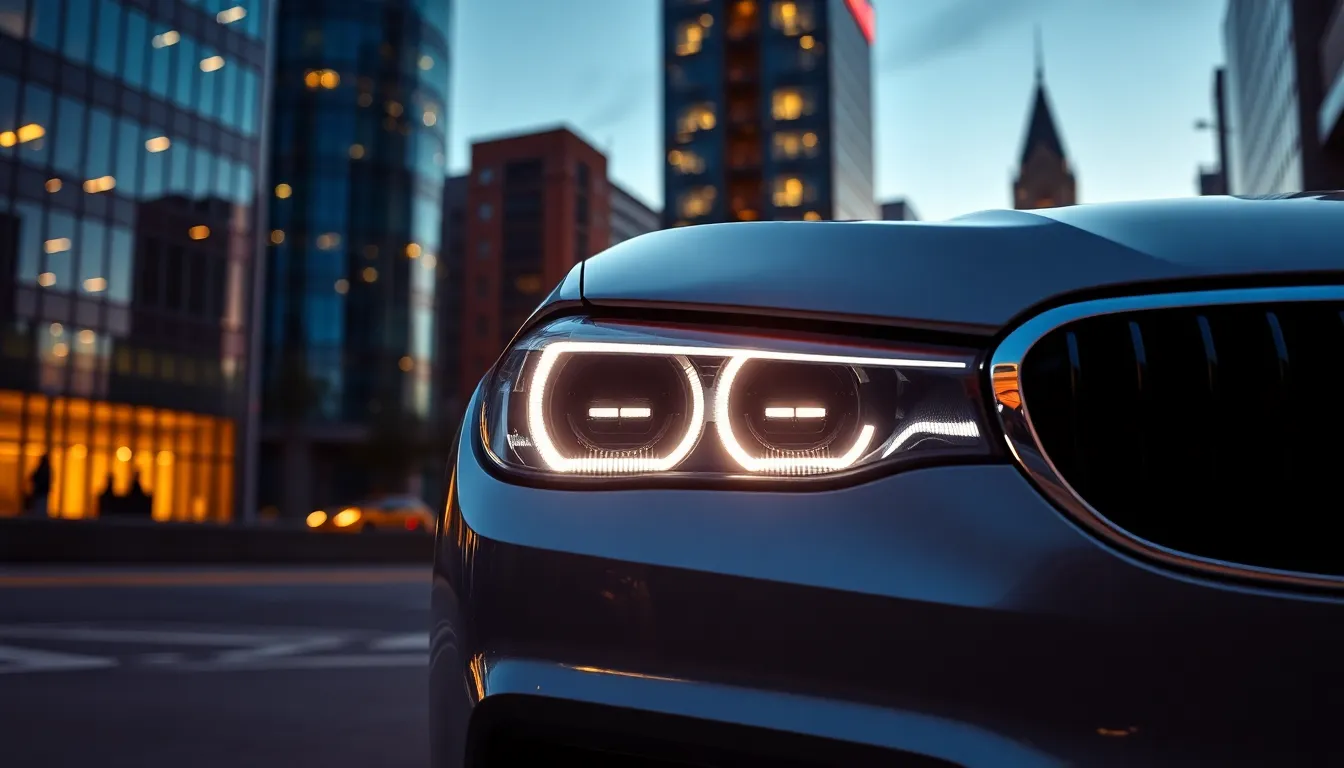
BMW’s lighting systems serve as sophisticated jewelry for their vehicles, transforming functional illumination into stunning aesthetic statements. We’ll explore how these advanced lighting technologies enhance BMW’s distinctive design language while maintaining the brand’s commitment to innovation and performance.
Angel Eyes Headlight Signature
Angel Eyes represent BMW’s most iconic lighting innovation, creating instantly recognizable circular halos that define the brand’s visual identity. We first introduced this distinctive feature in 2001 on the E65 7 Series, using electroluminescent technology to produce ethereal white rings around traditional headlamp units. These luminous coronas became BMW’s signature calling card, distinguishing our vehicles in traffic and parking lots worldwide.
Modern Angel Eyes have evolved far beyond their original design, now utilizing LED technology for enhanced brightness and energy efficiency. We’ve refined the circular pattern across our entire lineup, from the aggressive interpretation on M models to the subtle elegance found on luxury sedans like the 5 Series and 7 Series. Each implementation maintains the core circular aesthetic while adapting to exact model characteristics and grille proportions.
Advanced Angel Eyes now incorporate adaptive functions, automatically adjusting intensity based on ambient lighting conditions and driving scenarios. We’ve expanded this technology to include welcome sequences that illuminate progressively when approaching the vehicle, creating dramatic reveals that showcase the kidney grille and overall front fascia design. These lighting choreographies have become integral to BMW’s premium ownership experience.
Ever-changing Turn Signals and Tail Light Patterns
Ever-changing turn signals showcase BMW’s commitment to combining safety with sophisticated aesthetics through sequential LED patterns. We’ve implemented sweeping amber sequences that flow from inside to outside, creating unmistakable directional indicators that enhance visibility while adding visual drama. These animated signals appear across our model range, from the compact 1 Series to the flagship X7 SUV.
Tail light designs use three dimensional LED arrays to create distinctive light signatures that remain recognizable even in darkness. We’ve developed unique patterns for each model line, ensuring that the 3 Series displays different lighting geometry than the X5 or i4, while maintaining cohesive BMW DNA throughout. These rear lighting systems often incorporate welcome and farewell animations, reinforcing the premium experience associated with BMW ownership.
OLED technology has revolutionized our approach to rear lighting design, allowing us to create impossibly thin light elements with uniform illumination. We’ve introduced this advanced technology on models like the M4 and iX, where organic LED strips provide striking visual impact while reducing overall thickness. These cutting edge lighting systems enable design flexibility that traditional LED arrays cannot match, supporting our ongoing evolution toward more refined and futuristic aesthetics.
Interior Luxury That Matches Exterior Elegance
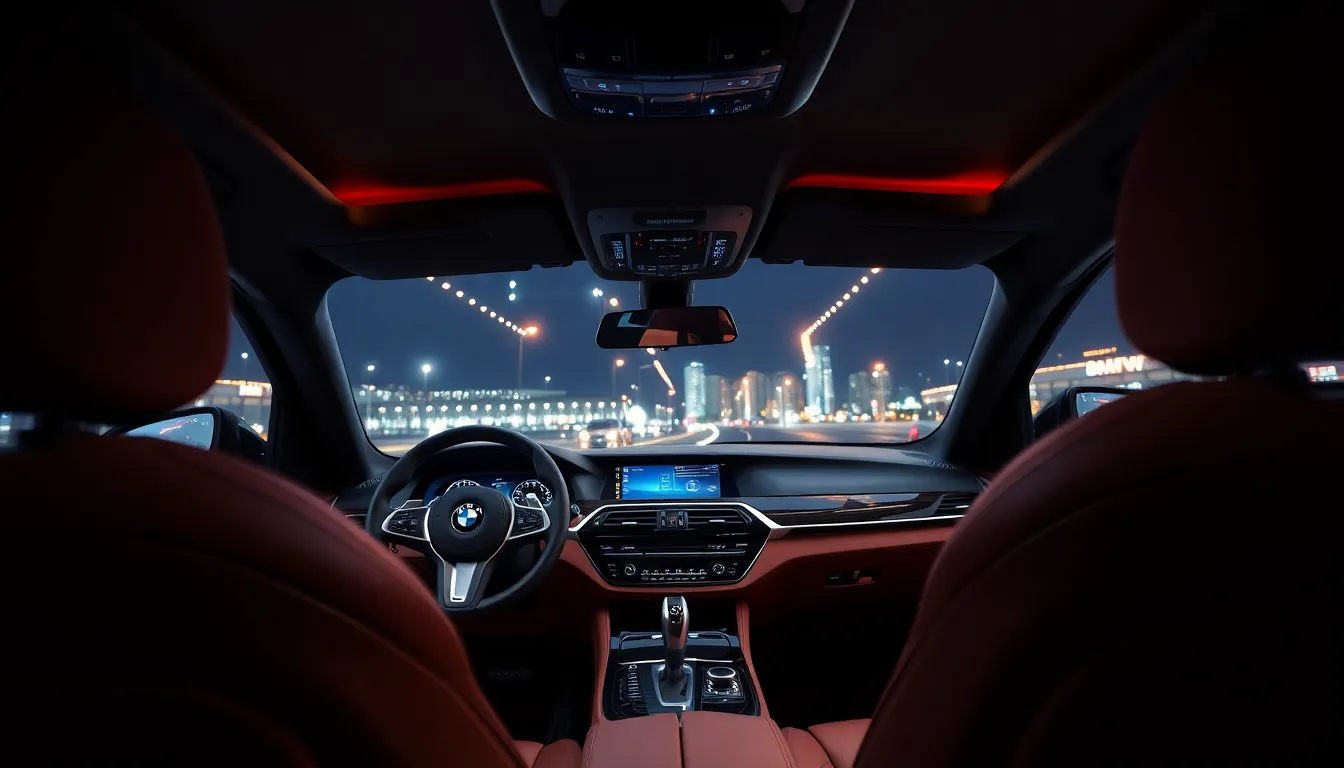
BMW’s interior design philosophy seamlessly extends the sophisticated aesthetic found on the exterior, creating a cohesive luxury experience that reinforces the brand’s commitment to premium craftsmanship.
Driver-Focused Cockpit Design
Ergonomic excellence defines every BMW interior, where we find thoughtfully positioned controls that prioritize driver engagement and performance. The signature kidney grille aesthetic carries through to interior elements like the distinctive air vents and dashboard contours that mirror the external design language.
Strategic placement of the iDrive controller, gear selector, and essential switches creates an intuitive command center that keeps drivers connected to their vehicle. BMW’s cockpit design features angled surfaces that direct attention toward the driver, reinforcing the brand’s performance oriented philosophy.
Digital integration through the curved display combines a 12.3-inch information display with a 14.9-inch control display in newer models like the iX and 7 Series. These screens blend seamlessly into the dashboard architecture while maintaining the clean lines that echo BMW’s exterior aesthetic principles.
Ambient lighting systems use LED technology similar to the exterior Angel Eyes, creating customizable interior atmospheres with up to 64 color options across different mood settings. This lighting enhances the sculptural dashboard elements and highlights premium materials throughout the cabin.
Premium Material Selection and Craftsmanship
Leather selection includes Vernasca, Dakota, and exclusive Merino options that undergo extensive quality testing to ensure durability and luxury appeal. BMW sources these materials from carefully selected suppliers who meet stringent environmental and quality standards.
Wood trim options feature authentic materials like fine wood open pore finishes, aluminum, and carbon fiber that complement the vehicle’s character. Each trim piece undergoes precision cutting and finishing processes that match the attention to detail found in BMW’s exterior panel gaps and surface treatments.
Metal accents throughout the interior use brushed aluminum, chrome, and titanium finishes that reflect light similarly to the ever-changing character lines on BMW’s exterior surfaces. These elements reinforce the brand’s commitment to premium materials across every touchpoint.
Sustainable materials increasingly appear in BMW interiors, including recycled plastics and natural fibers that maintain luxury standards while supporting environmental responsibility. The iX electric model showcases these innovations with FSC certified wood and recycled ocean plastic components that align with the sustainable design philosophy of BMW’s electric vehicle lineup.
Color Palettes That Enhance BMW’s Sophisticated Appeal
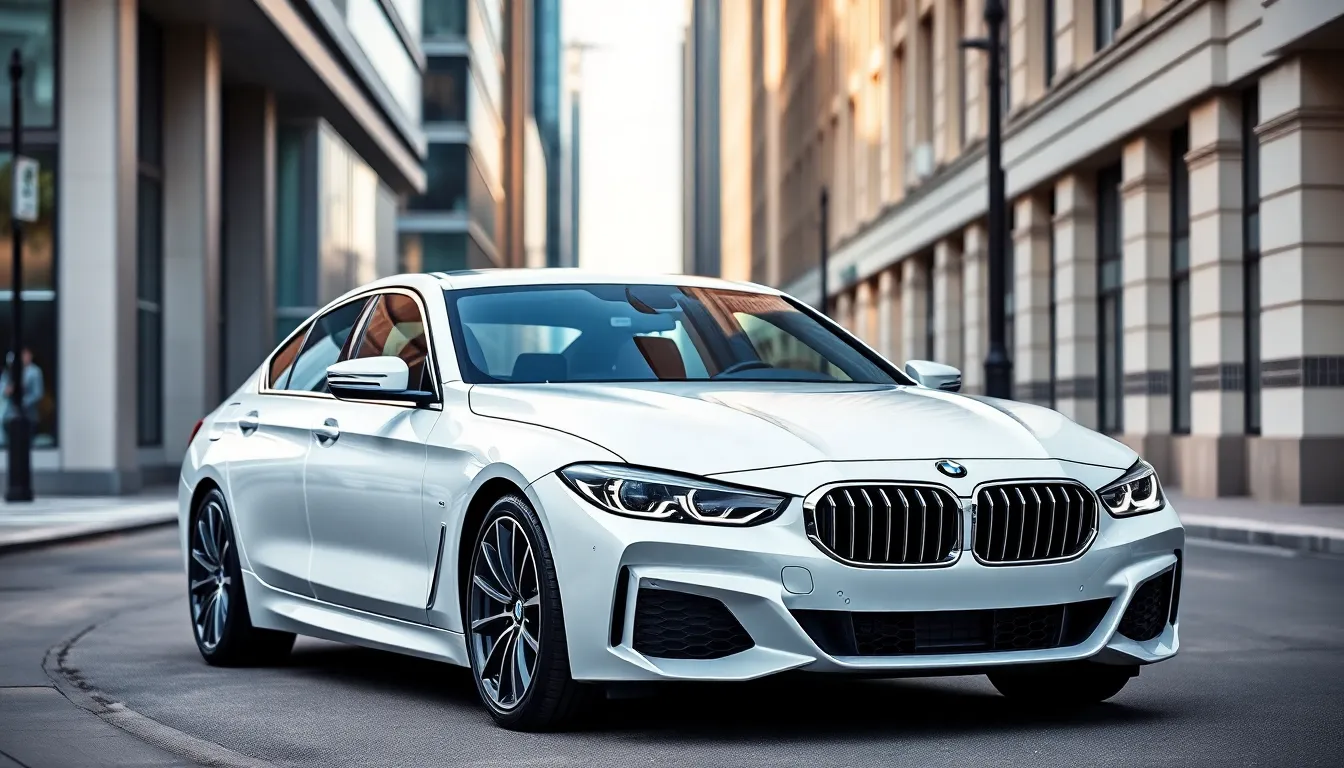
BMW’s color palette has evolved to complement the brand’s architectural design language while maintaining timeless appeal. Sophisticated paint finishes serve as the final layer that transforms engineering excellence into visual masterpieces.
Classic BMW Colors and Their Impact
Alpine White remains BMW’s signature color, creating a pure canvas that emphasizes the precision of body lines and the prominence of the kidney grille. This iconic shade enhances every design element from the Hofmeister kink to the sculptural side panels that define the brand’s athletic heritage. We see Alpine White particularly stunning on M models where it accentuates aggressive aerodynamic features and creates dramatic contrast with carbon fiber accents.
Jet Black delivers maximum sophistication by creating seamless silhouettes that merge shadows and highlights into flowing forms. The color transforms LED lighting elements into brilliant jewels against the dark canvas, making Angel Eyes and sequential turn signals appear more luminous. Black models showcase BMW’s commitment to understated luxury while allowing chrome accents and illuminated grilles to command attention.
Mineral Grey Metallic bridges the gap between bold and subtle, offering depth that changes throughout the day as lighting conditions shift. This versatile shade complements both sporty and luxury-focused models by highlighting surface textures without overwhelming the design’s architectural elements. We find this color particularly effective on larger vehicles like the X7 where it emphasizes commanding presence without appearing overly dramatic.
Storm Bay represents BMW’s approach to contemporary elegance through a sophisticated blue that honors the brand’s Bavarian heritage. The color creates visual interest while maintaining professional appeal, making it ideal for executive sedans and luxury SUVs. Storm Bay works exceptionally well with ambient lighting systems inside the cabin, creating a cohesive color experience from exterior to interior.
Modern Metallic and Matte Finish Options
BMW Individual Frozen colors revolutionize automotive aesthetics by eliminating traditional gloss for ultra-modern matte finishes that appear almost sculptural. These specialized paints require unique application processes and create surfaces that seem to absorb light rather than reflect it. Frozen Grey and Frozen Black have become particularly popular among enthusiasts seeking exclusivity and contemporary appeal.
Mineral White Metallic adds subtle sparkle to the classic white formula, creating depth and visual interest that standard Alpine White cannot achieve. The metallic particles catch sunlight and artificial lighting to create ever-changing surface effects that emphasize BMW’s precision manufacturing. This color works exceptionally well on curved surfaces where the metallic content creates flowing light patterns.
Aventurine Red Metallic demonstrates BMW’s bold approach to color by combining deep burgundy tones with metallic complexity. The finish appears different from every angle, shifting between dark elegance and vibrant energy depending on lighting conditions. We see this color particularly striking on convertible models where it complements leather interiors and creates emotional connections with drivers.
Barcelona Blue Metallic offers a contemporary interpretation of BMW’s traditional blue heritage through modern metallic technology. The color provides sophisticated appeal without the conservatism of traditional darker blues, making it suitable for both performance models and luxury vehicles. This shade works harmoniously with BMW’s chrome accents and creates visual continuity with the brand’s interior ambient lighting options.
Dravite Grey Metallic represents the evolution of sophisticated neutrals through advanced paint technology that creates almost three-dimensional surface effects. The color shifts between warm and cool tones throughout the day, making each viewing experience unique. We find this finish particularly effective on electric i models where it complements the futuristic closed-panel interpretations of the traditional kidney grille.
Wheel Designs That Complete the BMW Aesthetic Vision
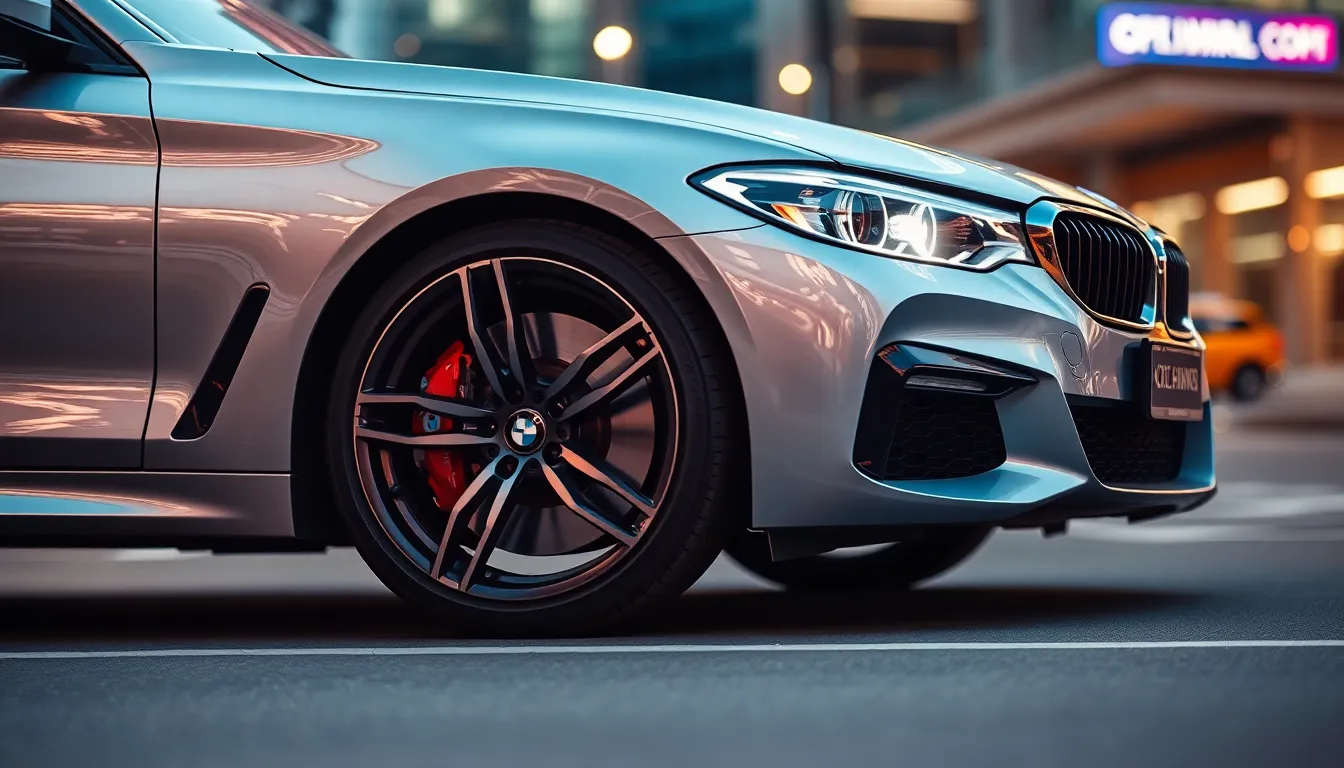
BMW’s wheel designs serve as the final touch that transforms engineering excellence into visual poetry. These carefully crafted elements don’t just support the vehicle—they amplify the brand’s commitment to sophisticated performance aesthetics.
Iconic BMW Wheel Styles Through the Years
Basketweave wheels dominated BMW’s aesthetic industry during the 1980s and early 1990s, featuring intricate cross spoke patterns that became synonymous with the brand’s commitment to detailed craftsmanship. We can trace this design philosophy through classic models like the E30 3 Series, where the BBS cross spoke wheels created a perfect balance between sporty aggression and refined elegance.
Style 5 wheels emerged as BMW’s signature design in the late 1990s, introducing five spoke configurations that emphasized clean lines and aerodynamic efficiency. These wheels appeared across multiple model lines, from the E39 5 Series to the E46 3 Series, establishing a cohesive visual language that reinforced BMW’s athletic heritage.
Turbine style wheels revolutionized BMW’s aesthetic approach in the 2000s, featuring curved spokes that created ever-changing visual movement even when stationary. Models like the E60 5 Series and E90 3 Series showcased these designs, where the flowing spoke patterns complemented the vehicles’ kidney grille proportions and character lines.
Modern directional wheels represent BMW’s current design evolution, with asymmetrical spoke patterns that optimize both aerodynamics and visual impact. We see these innovations in contemporary models like the G20 3 Series and G30 5 Series, where each wheel design specifically matches the vehicle’s performance characteristics and aesthetic personality.
Performance Oriented Rim Aesthetics
M Performance wheels showcase BMW’s most aggressive design language, featuring bold spoke patterns and lightweight construction that prioritize both function and visual drama. The iconic Style 666M wheels on the F80 M3 exemplify this approach, with Y spoke designs that create aggressive shadows while maintaining structural integrity for track performance.
Forged construction defines premium BMW wheel aesthetics, utilizing advanced manufacturing processes that create stronger, lighter wheels with sharper design details. We observe this technology in wheels like the Style 763M, where intricate spoke geometries and precise machining showcase BMW’s engineering capabilities while reducing unsprung weight.
Carbon fiber accents elevate M model wheel designs beyond traditional metal construction, incorporating lightweight materials that reinforce the brand’s performance focused aesthetic vision. These elements appear in models like the M4 Competition, where carbon fiber wheel centers create visual connections to interior trim and exterior aerodynamic components.
Brake caliper integration transforms wheels into performance showcases, with spoke designs specifically engineered to highlight BMW’s advanced braking systems. Models featuring M compound brakes use wheel designs that frame colorful calipers, creating visual depth that communicates the vehicle’s track ready capabilities through aesthetic elements.
Model-Specific Design Languages Across BMW’s Lineup
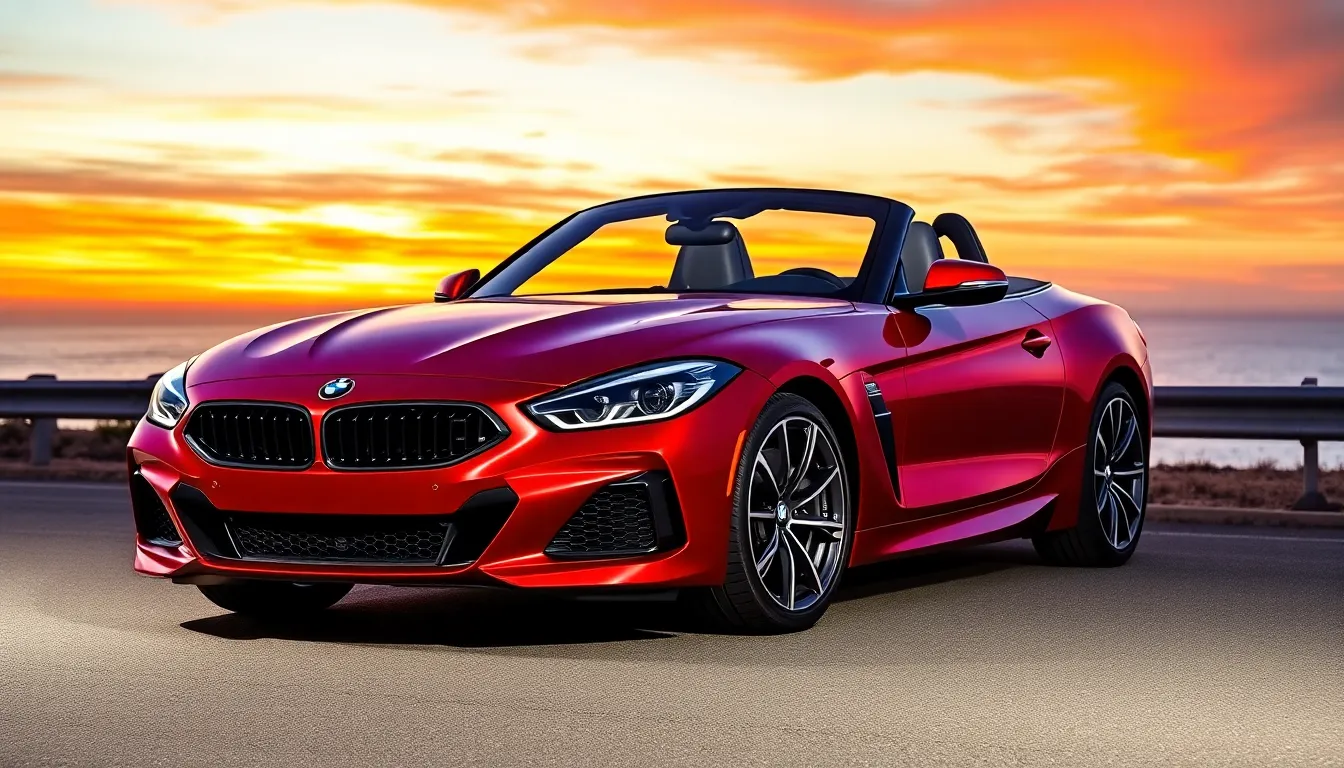
Each BMW model line speaks its own distinct visual language while maintaining the brand’s core design DNA. We can observe how different segments require unique approaches to balance performance expectations with aesthetic appeal.
Sports Car Aesthetics in the Z and M Series
Z Series roadsters embody BMW’s purest expression of sports car design philosophy. Low-slung proportions create an immediate visual connection to racing heritage, while the long hood and short rear deck establish classic sports car proportions. We see how the kidney grille takes on a wider, more aggressive stance in models like the Z4, emphasizing the car’s performance-focused character.
M Series vehicles push BMW’s athletic design language to its absolute limits. Flared fenders accommodate wider track widths, creating a muscular stance that telegraphs performance capability. Air intakes multiply across the front fascia, with functional cooling ducts replacing decorative elements found on standard models. Carbon fiber elements appear throughout M vehicles, from mirror caps to rear spoilers, reinforcing the connection between aesthetics and track-ready functionality.
Aerodynamic elements become prominent design features in high-performance variants. Front splitters, side skirts, and rear diffusers serve dual purposes as both functional airflow management and visual aggression enhancers. We notice how quad exhaust outlets in M models create a distinctive rear signature, while unique wheel designs featuring directional spoke patterns optimize brake cooling airflow.
Luxury Sedan Elegance in the 3, 5, and 7 Series
3 Series sedans establish BMW’s entry-level luxury design vocabulary with refined proportions. Clean shoulder lines run uninterrupted from headlight to taillight, creating visual length while maintaining compact dimensions. Chrome accents appear selectively around window frames and grille surrounds, providing premium touches without overwhelming the athletic foundation.
5 Series models amplify executive presence through increased visual weight and sophisticated detailing. Longer wheelbase proportions allow for more generous glass areas, creating an airy cabin appearance from the exterior. We observe how the kidney grille grows larger and more upright compared to the 3 Series, commanding greater road presence while maintaining family resemblance.
7 Series flagship sedans showcase BMW’s most luxurious design interpretation. Imposing front fascias feature the largest kidney grilles in the sedan lineup, often incorporating active shutters and illuminated surrounds. Full-LED lighting signatures become more elaborate, with welcome light sequences that create theater around the vehicle’s approach. Chrome trim escalates to include door handle surrounds, window trim, and exclusive wheel designs that emphasize craftsmanship over pure performance.
Interior luxury progression follows exterior sophistication across the sedan hierarchy. Extended wheelbase versions of the 5 and 7 Series provide additional rear-seat comfort, reflected in exterior design through longer rear door proportions and more generous rear quarter windows. We see how each series maintains the driver-focused cockpit philosophy while scaling luxury appointments and material quality to match price positioning.
The Role of Aerodynamics in BMW’s Beautiful Functionality
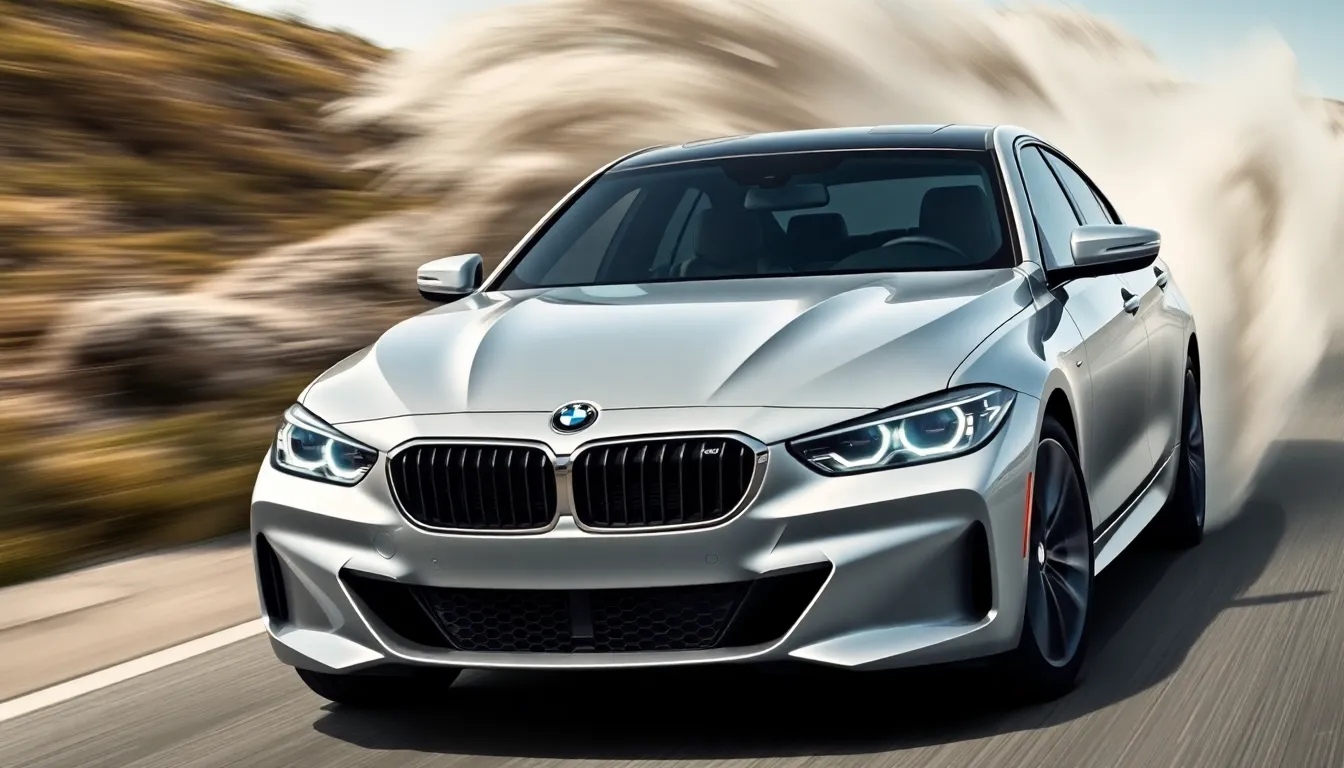
BMW’s design mastery extends beyond visual appeal to embrace the scientific principles that make their vehicles both stunning and efficient. Aerodynamic engineering shapes every curve and contour we see across BMW’s lineup.
Form Follows Function Philosophy
Function drives every aesthetic choice in BMW’s aerodynamic approach. Engineers collaborate with designers to ensure that each visual element serves a performance purpose while maintaining the brand’s sophisticated appeal. Air intakes positioned strategically across BMW models aren’t just decorative accents—they channel cooling air to critical components like brakes, intercoolers, and radiators.
Surface tension flows naturally across BMW bodies through carefully calculated curves. These sculpted panels reduce drag coefficients while creating the ever-changing visual movement that defines BMW’s athletic character. Underbody panels stretch flat beneath every modern BMW, hiding complex aerodynamic channels that manage airflow invisibly.
Active aerodynamic elements enhance both performance and visual drama. Kidney grilles on models like the X7 feature active louvers that close at highway speeds to reduce drag, then open when cooling demands increase. Rear spoilers deploy automatically on M models, creating functional downforce while adding visual excitement during spirited driving.
Wind-Sculpted Design Elements
Airflow patterns carve BMW’s signature design language through computational fluid dynamics testing. Wind tunnel development shapes every external surface, from the subtle lip spoilers integrated into trunk edges to the complex air curtain systems that channel airflow around wheel wells. Side mirrors incorporate aerodynamic tear-drop shapes that minimize wind noise while maintaining BMW’s distinctive profile.
Character lines serve dual purposes as airflow directors across BMW surfaces. These precisely positioned creases guide air smoothly along body panels, reducing turbulence while creating the sharp definition that gives BMW vehicles their muscular appearance. Door handles now sit flush with body panels on electric models like the i4, eliminating drag-inducing protrusions.
Brake cooling ducts hide behind M model bumper designs, creating functional beauty through purposeful engineering. These openings channel high-pressure air directly to brake rotors during track sessions while contributing to the aggressive aesthetic that M enthusiasts expect. Rear diffusers integrate seamlessly into bumper designs, managing airflow separation while housing exhaust outlets in visually appealing configurations.
| Aerodynamic Element | Function | Visual Impact |
|---|---|---|
| Active kidney grilles | Reduce highway drag by 10% | Creates ever-changing opening/closing motion |
| Air curtain systems | Channel airflow around wheels | Integrates into front bumper design |
| Flush door handles | Eliminate surface protrusions | Maintains clean body surfacing |
| Rear diffusers | Manage airflow separation | Houses exhaust in aesthetic layout |
BMW’s Commitment to Timeless Design Philosophy
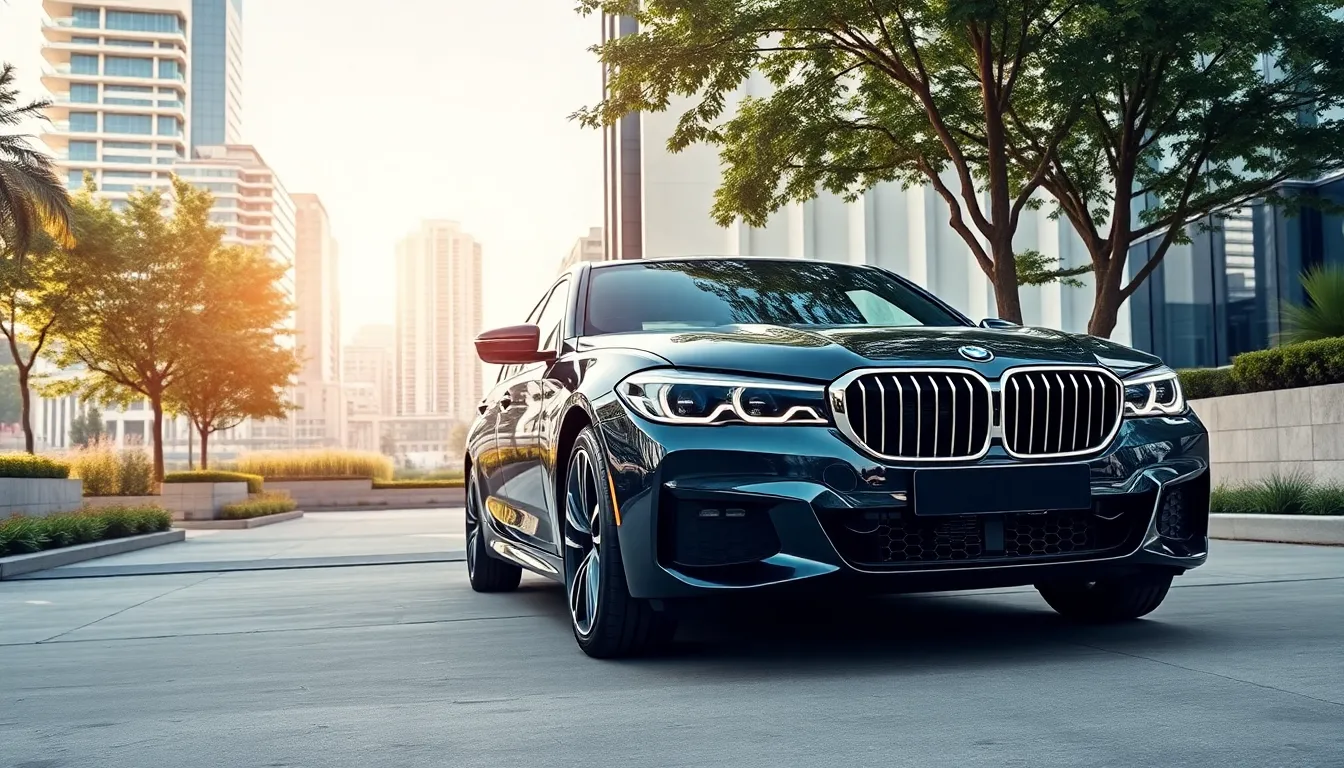
BMW’s design philosophy transcends fleeting trends by establishing a foundation of aesthetic principles that remain relevant across generations. We find this commitment reflected in every vehicle that bears the blue and white roundel, from classic models to cutting-edge electric vehicles.
Balancing Innovation With Heritage
BMW maintains its iconic design DNA while continuously pushing boundaries through technological advancement. We see this balance most clearly in the kidney grille’s evolution, where the original 1933 functional cooling element has transformed into a ever-changing design statement that adapts to each era’s needs. The Hofmeister kink represents another example of heritage preservation, appearing consistently across nine decades while adapting to contemporary manufacturing techniques and aerodynamic requirements.
Modern BMW models integrate advanced materials like carbon fiber and aluminum with traditional craftsmanship techniques that honor the brand’s racing heritage. We observe this philosophy in the way BMW preserves essential proportions while incorporating progressive elements like adaptive LED lighting and active aerodynamics. The brand’s design teams study classic models from the 2002 and E30 generations to understand the fundamental characteristics that define BMW’s visual language.
Design elements evolve gradually rather than dramatically, ensuring that a 1980s 3 Series shares visual DNA with today’s G20 generation. We appreciate how BMW introduces new technologies like laser headlights and gesture control interfaces while maintaining the driver-focused cockpit layout that has defined the brand since the 1960s. This measured approach to innovation ensures that BMW vehicles remain instantly recognizable while embracing contemporary design trends.
Future Design Direction and Sustainability
BMW’s future design philosophy integrates environmental responsibility with aesthetic excellence through sustainable material innovations. We witness this transformation in the iX electric SUV, where recycled plastics and natural fibers create luxury surfaces that rival traditional leather and wood trim options. The brand’s commitment to carbon neutrality by 2050 directly influences design decisions, from aerodynamic optimization to lightweight construction techniques.
Electric vehicle platforms allow BMW designers to reimagine proportions and space utilization without compromising the brand’s athletic stance. We see this evolution in the i4’s sleek profile, which maintains sedan elegance while optimizing aerodynamics for maximum range efficiency. The kidney grille transforms into a closed panel on electric models, demonstrating how BMW adapts iconic elements to serve new functional requirements.
Digital integration continues expanding through curved display technology and augmented reality features that enhance the driving experience without overwhelming traditional BMW values. We expect future models to incorporate even more sustainable materials like mushroom-based leather alternatives and bio-based plastics while maintaining the premium feel that defines BMW interiors. The brand’s vision 2030 roadmap emphasizes design as a crucial factor in achieving sustainability goals while preserving the emotional connection that makes BMW vehicles desirable across generations.
Conclusion
BMW’s aesthetic mastery continues to set the standard for automotive design excellence. We’ve witnessed how the brand seamlessly weaves together performance-driven elements with sophisticated luxury creating vehicles that resonate with enthusiasts worldwide.
The brand’s unwavering commitment to design evolution while honoring its heritage demonstrates why BMW remains at the forefront of automotive aesthetics. Every curve line and detail serves a purpose beyond mere visual appeal.
As BMW embraces sustainable innovation and digital integration we’re confident the brand will continue defining what it means to create beautiful purposeful automobiles. Their design philosophy proves that true automotive artistry never goes out of style.
Frequently Asked Questions
What is BMW’s kidney grille and why is it iconic?
The BMW kidney grille is the brand’s most recognizable design element, originating from the 1933 BMW 303. Initially designed for engine cooling, it has evolved over nine decades into a bold design statement. The grille’s distinctive kidney shape has been refined and adapted across different models, from large active grilles on SUVs to closed-panel versions on electric vehicles, making it a timeless symbol of BMW’s design philosophy.
What is the Hofmeister kink in BMW design?
The Hofmeister kink is a distinctive design feature that has been a BMW hallmark since the 1960s, first appearing on the 1500 sedan. It’s a characteristic bend in the rear window’s C-pillar that enhances both aesthetics and structural integrity. This design element has evolved across various BMW models, adapting to different vehicle profiles while maintaining its iconic status and contributing to BMW’s cohesive design language.
How does BMW balance tradition with innovation in their design?
BMW maintains timeless design principles while embracing modern innovation through careful evolution of iconic elements. The brand preserves essential proportions and classic features like the kidney grille and Hofmeister kink while integrating advanced materials such as carbon fiber and aluminum. This approach ensures that modern BMW models remain recognizably BMW while incorporating contemporary technology and sustainability features.
What makes BMW’s design philosophy unique?
BMW’s design philosophy uniquely blends aggressive sportiness with refined elegance, creating vehicles that communicate performance through visual language. The brand focuses on sleek body lines, sculpted panels, and precision engineering that allows for sharp character lines reflecting light dynamically. This approach appeals to drivers who value both performance and sophisticated aesthetics, making BMW ownership a statement of appreciation for craftsmanship.
How is BMW adapting their design for electric vehicles?
BMW adapts their design for electric vehicles by reimagining iconic elements for new purposes. The kidney grille becomes a closed panel on electric models like the iX to optimize aerodynamics, while maintaining visual recognition. The brand incorporates recycled materials, advanced digital integration through curved displays, and sustainable design practices while preserving BMW’s essential design DNA and driver-focused philosophy.
What role do character lines play in BMW’s aesthetic?
Character lines in BMW design create a dynamic visual language that communicates performance and elegance. These precisely engineered lines reflect light in ways that emphasize the vehicle’s athletic stance and sculptural qualities. Each model features character lines tailored to its specific purpose – whether performance-focused or luxury-oriented – contributing to BMW’s cohesive design identity while allowing for model-specific personality and appeal.

